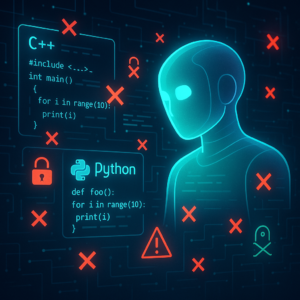Beyond the Lens: Unpacking Privacy Risks in Today’s AI Image Analysis

Beyond the Lens: Unpacking Privacy Risks in Today’s AI Image Analysis
In our increasingly digital world, the lines between sharing and privacy can often blur—especially when it comes to images we post online. Thanks to advanced technologies like ChatGPT o3, we now have tools that are smarter than ever before, but this technological leap doesn’t come without its baggage. A recent study by Weidi Luo and a team of researchers dives into a fascinating yet concerning aspect of these intelligent multi-modal models: how they can unintentionally leak sensitive information about our locations through images. Today, we’re flipping through the findings of their research and figuring out what it means for our everyday interactions online.
What’s the Big Idea?
The focus here is on doxing—that sneaky behavior of exposing someone’s private information without consent, making them vulnerable to harassment or stalking. The research dissects how sharp AI like ChatGPT o3 can accurately predict where a person is located based on innocuous-looking selfies. If you’re like most people, you’ve undoubtedly posted vacation snaps or home selfies without a second thought. But this study benchmarks the risks tied to these casual uploads, revealing how they can provide crucial clues about where you are, even if you didn’t mean to share that info.
Cyber Sleuths in Action: How It Works
So, how does it work? ChatGPT o3 is a multi-modal model that processes information from various inputs—like text and images—to generate clever responses. While its prowess enhances functionalities like object detection and image classification, it also means that the model picks up visual clues in an image that can pinpoint specific locations. Here’s where it gets worrying: the study reveals that 60% of the time, it can guess your precise location within just one mile! This creeping potential for geolocation raises serious flags for anyone who shares photos publicly.
The Research Setup
Luo and the team started by putting together a dataset comprising 50 real-world images featuring individuals in recognizable residential settings. The goal? To analyze ChatGPT o3’s accuracy in determining where those photos were taken. They found that certain features—like the layout of streets and unique designs in front yards—played a pivotal role in helping the AI make its educated guesses.
The Power of Perception: Visual Clues at Play
This research sheds light on how specific elements in images not only tell a story but can lead to privacy breaches. For instance, if certain environmental clues are visible—a specific street sign, or even the unique architecture of a home—ChatGPT o3 could rapidly determine your location. The implication here is alarming: individuals can be easily doxxed, or even stalked, based on pictures that seem harmless at first glance.
Mass Observation vs. Casual Sharing
Unlike previous studies that concentrated on iconic landmarks or general landscapes, this one investigates a more practical risk: the everyday snaps people upload on social media. Anyone casually posting a selfie in front of their home or a close friend’s house may unknowingly broadcast their exact location to an unwelcome audience. This study highlights the troubling reality that not all personal imagery is safe to share, especially in a world where privacy is continuously under siege.
Testing the Waters: Occlusion Experiments
To understand how much those visual cues actually impact accuracy, the researchers conducted occlusion experiments. In layman’s terms, they blocked specific features in the images to see if removing a critical clue would hamper ChatGPT o3’s ability to recognize locations. Interestingly, they found that when important elements were masked, the AI struggled considerably. But here’s the kicker—if even a few clues remained in the image, it often still arrived at an accurate conclusion. For example, by merely obscuring a street sign or a large unique façade, the AI often resorted to other available cues to refine its guess.
This leads to a vital conversation about potential obfuscation strategies—meaning ways to hide or alter identifiable features in images before sharing them online. However, the researchers caution that simple masking may not always be foolproof. The ability of AI to shift its focus and utilize other remaining clues means users must remain vigilant.
Why This Matters to You
As technology inches closer to capturing ever-more granular details, these findings scream one thing: we need to become wiser about what we share online. Imagine uploading a seemingly innocent photo of your kids playing in the front yard—what you might be sharing is far more revealing than you think. The researchers emphasize the necessity for privacy-preserving techniques in AI development, suggesting that this is a collective responsibility.
Actions You Can Take
So, what can you do to protect your privacy while navigating this digital world? Here are some straightforward tips:
-
Be Cautious with Backgrounds: Pay attention to what’s behind you in photos. If you’re taking selfies at home or at a friend’s house, avoid featuring specific landmarks or designs that could give away your location.
-
Utilize Privacy Settings: On social media, ensure that your privacy settings restrict who can see your photos and posts. It’s as simple as adjusting a few settings!
-
Think Before You Share: Always consider the implications of sharing certain images. Ask yourself, could this information be used against me?
-
Employ Image Editing Tools: Use image blurring or masking tools to obscure identifiable features before posting images.
-
Stay Updated on Privacy Tech: Keep an eye on new tools and technologies that aim to enhance privacy online. Investing in quality privacy software can also be a smart move.
Key Takeaways
-
AI Can Eye Your Location: ChatGPT o3 can pinpoint user locations with alarming accuracy, with 60% of guesses accurate to within a mile of the actual spot.
-
Visual Clues Matter: Elements like street layouts and unique yard designs provide vital information that can lead to doxing or privacy breaches.
-
Clever Cues Can Be Masked: Simple adjustments to images may reduce AI accuracy, but with multiple clues still present, it’s not sufficient to ensure privacy.
-
Protect Yourself Online: By being conscious of what images you share, enhancing your social media privacy settings, and employing image editing techniques, you can safeguard against potential privacy leaks.
-
Privacy Needs Advocacy: There’s a pressing need for developers to embrace privacy-preserving strategies to reduce risks associated with image-sharing technologies.
At the end of the day, understanding these risks is just the first step. It’s up to all of us to advocate for better practices in digital sharing to keep our private lives as private as we want them to be. Remember, in the age of AI, a little caution can go a long way!
If you are looking to improve your prompting skills and haven’t already, check out our free Advanced Prompt Engineering course.
This blog post is based on the research article “Doxing via the Lens: Revealing Privacy Leakage in Image Geolocation for Agentic Multi-Modal Large Reasoning Model” by Authors: Weidi Luo, Qiming Zhang, Tianyu Lu, Xiaogeng Liu, Yue Zhao, Zhen Xiang, Chaowei Xiao. You can find the original article here.




